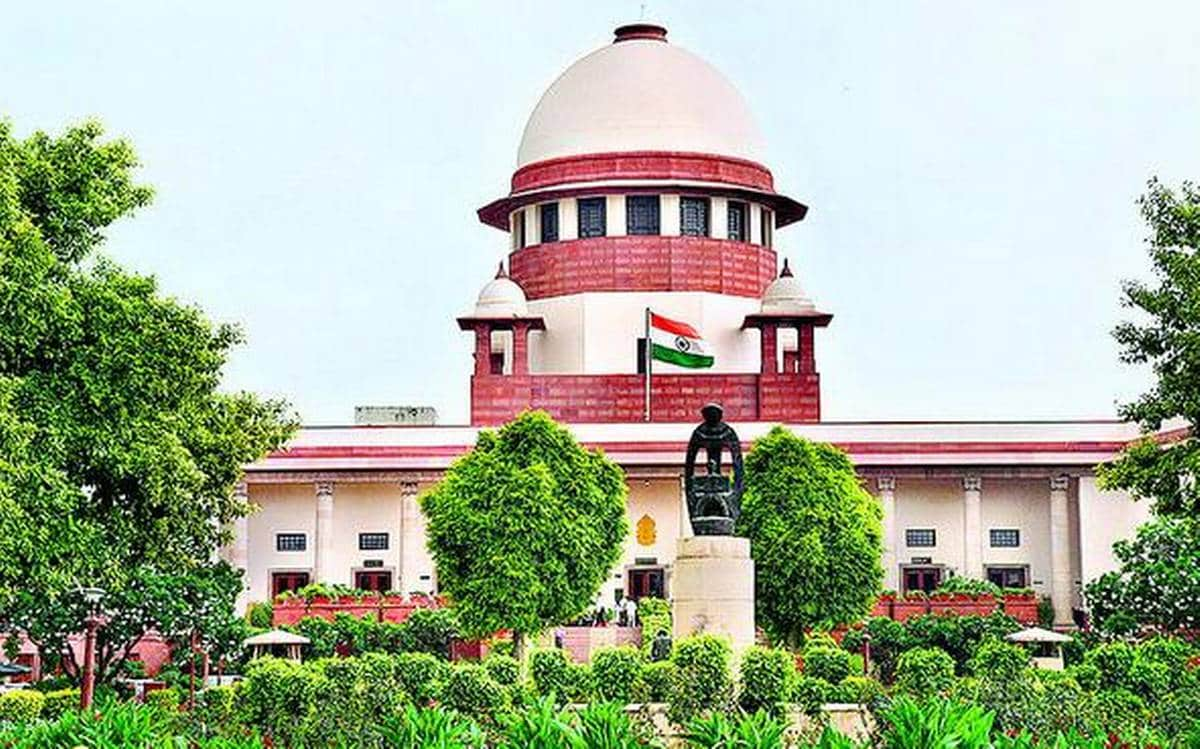INTRODUCTION
Insolvency and bankruptcy laws are integral to any capitalist system. They serve as the foundation for the orderly dissolution or restructuring of a variety of company structures, including sole proprietorships, partnerships, and limited liability corporations. As a result, bankruptcy rules make it easier to re-allocate cash that has been locked up in a failing enterprise.
It is the state or condition of having more debts (liabilities) than total assets which might be available to pay them, even if assets were mortgaged or sold.
Bankruptcy is not exactly the same as insolvency. Technically, bankruptcy takes place when a court has determined insolvency, and given legal directions for it to be resolved. Bankruptcy is a determination of insolvency made by a court of law with resulting legal orders intended to resolve the insolvency.
Constitutional framework Under the Constitution of India ‘Bankruptcy & Insolvency’ is Entry 9 in List III Concurrent List, (Article 246 –Seventh Schedule to the Constitution) i.e., both Centre and State Governments can make laws relating to this subject.
POWERS OF RESERVE BANK OF INDIA TO INITIATE CORPORATE INSOLVENCY RESOLUTION PROCESS
Regulatory Framework
Under the Reserve Bank of India Act, 1934:
The Reserve Bank of India (“RBI”) is entrusted with the responsibility of regulating and supervising Non-Banking Financial Companies (“NBFCs”) by virtue of the powers vested in it pursuant to Chapter III B of the Reserve Bank of India Act, 1934 (“RBI Act”). The regulatory and supervisory objective of RBI is (i) to maintain the continued viability of NBFCs by ensuring that they function on healthy lines; (ii) develop an appropriate prudential framework for the NBFC sector; (iii) protect the interest of the depositors by comprehensive regulation of deposit taking NBFCs; (iv) curb un-authorized and fraudulent deposit acceptance by NBFCs; and (v) ensure protection to consumers of NBFC services by laying down of fair practices code.
In terms of Section 45-IE, if in the opinion of the RBI the affairs of an NBFC are being conducted in a manner detrimental to the interest of the depositors or creditors, the RBI may for securing the proper management of such company or for financial stability, supersede the board of directors of such NBFC. On supersession of the board of directors of the NBFC, an administrator shall be appointed who shall be bound to follow such directions as prescribed by RBI. Once the board of the NBFC is superseded the chairman, managing director and other directors shall from the date of such supersession vacate their offices and all the powers, functions and duties of the board shall, until the board of directors of such company is reconstituted, be exercised and discharged by the administrator. The RBI shall also constitute a committee consisting of three or more members who have experience in law, finance, banking, administration or accountancy to assist the administrator in discharge of his duties. Further, the employees of such NBFC, whose board is suspended shall assist the administrator by providing all information and details as may be required by the administrator to carry out his duties.
Insolvency and bankruptcy code:2016
The Insolvency and Bankruptcy Code was suggested in 2014 by the Bankruptcy Legislative Reforms Committee, chaired by T. K. Viswanathan (IBC). The IBC was created with the intention of consolidating and amending the laws governing reorganisation and insolvency resolution of corporate persons, partnership firms, and individuals in a time-bound manner in order to maximise the value of such persons’ assets, promote entrepreneurship, increase credit availability, and balance the interests of all stakeholders, including changing the priority of government dues payment. In May 2016, the IBC, 2016 was eventually adopted and published in the Indian Gazette. The legislation strives for insolvency resolution by insolvency experts in a time-bound way (originally 180 days, extendable by further 90 days under specific conditions, but currently extended to 330 days). The statute assures that the judicial and business parts of the settlement process are separated, rectifying previous legislative errors. Furthermore, the National Company Law Tribunal (NCLT), not the DRTs, would be the adjudicating authority under the IBC. As of now, the IBC is the only law that governs insolvency, bankruptcy, and the reconstruction of failing businesses, reducing the role of prior laws. A major legislative gap in the settlement of NPAs was closed with the passage of the IBC. The RBI replaced the existing CDR rules with a standardised and simplified general framework for the resolution of stressed assets under IBC in a circular dated February 12, 2018. Despite the Supreme Court’s ruling on 2 April 2019 that the RBI’s 12 February circular mandating lenders to commence loan settlement or restructuring even if the default was only for a single day was invalid, this circular undoubtedly represents the first step towards protecting the integrity of debt contracts.
The Code’s provisions have been announced in stages and on a need-to-know basis. The sections of the Code relating to the Corporate Insolvency Resolution Process (CIRP) went into effect in December 2016. Individual insolvency provisions were planned to be published in three stages: first, personal guarantors to corporate creditors (effective December 2019), next partnership businesses and proprietorship firms, and finally other people (yet to come in force).
PROGRESS OF THE RESTRUCTURING AND INSOLVENCY ACTIVITY POST INTRODUCTION OF THE CODE
Despite the fact that the IBC was passed more than three years ago, its impact has been felt. As of February 2020, over 26,250 applications have been filed under the IBC, with roughly 3600 of them being accepted. 205 cases have been settled, and 890 cases have been liquidated, out of the accepted cases. Under the IBC, the period it takes to resolve a company has decreased from around 4.3 years to about 364 days. Furthermore, in comparison to their claims, financial creditors realised roughly 42% of their claims under settlement programmes. Gross nonperforming assets (NPAs) fell to roughly 9.1% in the fiscal year ending in 2019, down from 11.2 percent in 2018. 5 The average rate of recuperation through the Code is much higher than through other methods of recovery and exercise. According to the World Bank’s Doing Business Report’s ‘resolving insolvency index,’ 2020: (a) India’s ranking has risen from 136th in 2015 to 52nd in 2019, (b) the recovery rate has increased from 25.7 percent in 2015 to 71.6 percent in 2019, and (c) the recovery time has decreased from 4.3 years in 2015 to 1.6 years in 2019.
OVERVIEW OF THE PRESENT LEGAL FRAMEWORK UNDER THE CODE
The Code distinguishes between the business and judicial parts of insolvency and bankruptcy procedures. The legislation’s main goal is to safeguard the corporate debtor’s resuscitation and continuance by shielding it from its management and from a corporate death by liquidation. As a result, the Code is both an useful piece of legislation aimed at reviving a failing firm and a simple recovery law for creditors. As a result, the interests of the corporate debtor have been divided and separated from those of its promoters and/or management. As a result, rather than being adversarial, the settlement procedure protects the corporate debtor’s interests. The Code’s framework safeguards creditors’ interests in the liquidation waterfall by prioritising payments to secured creditors over payments to crown debts. However, it is the commercial wisdom of the majority of creditors to define, via discussion with the potential resolution applicant, how and in what way the corporate resolution process, including the distribution of cash, would take place throughout the resolution process. The following are some of the important components of the CIRP framework and the liquidation procedure for corporate debtors:
Corporate insolvency Resolution Process CIRP: On a minimum default of ‘1,00,00,000, a financial creditor (either alone or jointly), an operational creditor, or the corporate debtor itself is eligible to commence CIRP. The government recently increased the threshold limit for commencing CIRP from ‘1 lakh to ‘1 crore to avert bankruptcy procedures against medium and small businesses during the COVID-19 crisis. Upon admittance, a moratorium on litigation, asset transfers, and security enforcement begins. The board of directors is removed from office, and an interim resolution professional (IRP) is appointed to assume charge of the corporate debtor and its assets, among other things. Following that, IRP appoints a committee of financial creditors (CoCs). CoC is needed to make important (66 percent voting share) and regular (51 percent voting share) decisions that are not within the realm of IRP. The resolution professional (RP) creates the qualifying conditions for the submission of the resolution plan with the CoC’s permission and publishes an expression of interest. In order to prevent the tainted person from regaining power, some persons who are subject to impairment in or outside India under Section 29A of the Code are barred from proposing a resolution plan. With a 66% majority vote, the CoC approves a legally compliant, financially viable, and practical resolution plan, which is subsequently submitted to the NCLT’s relevant bench for approval. The corporate debtor must be liquidated if no resolution plan is received or authorised by the CoC by the end of the maximum resolution term, which is 270 days or 330 days (including litigation). The 330-day deadline is not required, and the Supreme Court regarded it as such in the case of Essar Steel India Limited vs. Satish Kumar Gupta & Others. 11 A corporate debtor may be restructured by a merger, amalgamation, or demerger as part of the resolution plan permitted under the Code.
Liquidation process: Under the Code, a CIRP may or may not be followed by liquidation. Triggers for liquidation include (a) rejection of a resolution plan by NCLT if it fails to meet certain necessary conditions, (b) the resolution plan not being approved by the CoC by 66 per cent in value or no resolution plan is received, (c) a decision of the CoC to proceed with liquidation during the CIRP period, or (d) failure of the debtor to adhere to the terms of the resolution plan approved by NCLT. In the event that a firm has not made any payment defaults, it may decide to voluntarily dissolve the corporation. When NCLT issues a liquidation order, a liquidator is appointed, CoC is dissolved, and a stakeholders’ (creditors entitled to distribution) consultation committee is formed. Liquidator checks, acknowledges, or rejects creditors’ claims, creates an asset document, and takes custody of and controls all of the corporate debtor’s assets. The liquidator may sell the corporate debtor’s assets in bulk or individually, in parcel or slump sales, or on a continuing concern basis. Auction is the most common method of sale. A person who is ineligible under the IBC to propose a plan for the corporate debtor’s bankruptcy resolution
Other key features: The Code requires that transactions that are preferential, undervalued, or exorbitant in nature be examined for the advantage of creditors. The assessment review period is set as follows (a) two years where transactions are entered into with related parties and (b) one year in all other cases. Furthermore, transactions conducted with the aim to cheat creditors must be examined, although the Code’s provisions do not provide for a lookback time.
RECENT LEGAL DEVELOPMENTS
The government has raised the filing threshold for IBC cases from one lakh to one crore. Because of the rise in coronavirus infections, the government is considering suspending IBC registrations for a few months. The regulations pertaining to insolvency and bankruptcy of financial service providers were recently put into effect by the government (FSPs). Non-banking financial firms (which include home finance companies) with an asset size of 500 crore or more are currently covered by the regulations as a category of FSP (with the RBI as the financial sector regulator). Dewan Housing Finance Corporation Limited is the first FSP to be subjected to CIRP. The definition of “interim financing” was enlarged to include “any additional debt that may be disclosed.” As a result, certain pre-IBC financing may be eligible for inclusion in the category of ‘interim finance.’ Minimum filing thresholds under the IBC are (a) in the case of homebuyers/allottees, less than 100 homebuyers/allottees under the same project or at least 10% of the total number of such allottees; and (b) in the case of a class of creditors, less than 100 creditors of such class or at least 10% of the total number of such creditors. The ability to define important products and services that cannot be terminated during the moratorium has been given to RP (provided dues are paid during moratorium). Similarly, there will be no automatic termination/suspension of a licence, permit, registration, quota, concession, clearances, or any other right granted by the central government, state government, local authority, sectoral regulator, or any other authority, and they must continue during the moratorium subject to the payment of dues for services rendered during the moratorium.14 In many cases, it was noted that the corporate debtor does not have sufficient funds during the liquidation period. In effect, a modification said that COC must assess the firm’s liquid assets and compare them to the fees that the liquidator is anticipated to spend if the company goes into liquidation (liquidation cost). CoC will contribute to the difference, if any, between the liquidation costs and the liquid assets available to the firm if the estimate of liquid assets is less than the liquidation costs. Furthermore, secured creditors who choose to realise their security interest must contribute their share of the insolvency resolution process costs, liquidation process costs, and workmen’s dues (for the 24 months prior to the liquidation commencement date) to the extent of their relinquished security interest. They must pay these payments within 90 days of the liquidation’s start date. They must also pay any excess proceeds realised over the amount of their accepted claims within 180 days of the liquidation’s start date. The asset will become part of the Corporate Debtor’s liquidation estate assets if the secured creditor fails to pay such sums to the liquidator within 90 days or 180 days, as the case may be. 16 Secured creditors can’t sell assets to someone who isn’t allowed to file an insolvency plan (Section 29A).
CHALLENGES AND WAY FORWARD
IBC has enhanced creditors’ positions and changed India’s corporate credit culture. It has also influenced the behaviour of non-performing company promoters by establishing credit discipline. The impact of the IBC has been increased by the announcement of regulations linked to the beginning of insolvency of personal guarantors to corporate debtors. Other factors that complicate the proper resolution of firms under the IBC include: (a) the resolution applicant’s breach of the resolution plan after NCLT approval, (b) the lack of cross-border insolvency regulations and rules, (c) the lack of cross-border insolvency regulations and rules for group insolvency, (d) post-closure litigation by operational creditors, such as tax authorities or unsuccessful bidders, and (e) conflicting NCLT judgments, etc. Some of the issues encountered in the implementation of the IBC can be alleviated by (a) holding timely colloquia for NCLT judges and increasing interaction between practitioners from various jurisdictions; (b) sensitising various government and statutory authorities about the treatment of government and statutory dues under the IBC to reduce the scope for litigation and the resulting delay in the resolution of companies under corporate insolvency; and (ii) NCLTs according to higher prioritisation standards.
CONCLUSION
Following the adoption of the IBC, challenges to the resolution process at every level resulted in a slew of litigation, which caused delays and hampered the timely completion of such processes. Since the founding of the Securities and Exchange Board of India (SEBI), many modifications and judicial discussions have helped to close the vulnerabilities in the framework and ringfence both lenders and borrowers. However, fundamental adjustments that would strengthen the financial sector are required in the near future, Furthermore, we must alter our attention in order to balance the interests of diverse stakeholders and minimise friction caused by regulatory overlaps, if any exist. A fragmented approach to the insolvency process may not be in the best interests of the Indian economy, particularly in these times of uncertainty and scepticism.
Since the founding of the Securities and Exchange Board of India (SEBI), many modifications and judicial discussions have helped to close the vulnerabilities in the framework and ringfence both lenders and borrowers. However, fundamental adjustments that would strengthen the financial sector are required in the near future.


 Opinion3 years ago
Opinion3 years ago
 Entertainment8 years ago
Entertainment8 years ago
 Entertainment8 years ago
Entertainment8 years ago
 Fashion8 years ago
Fashion8 years ago
 Opinion4 years ago
Opinion4 years ago
 Entertainment8 years ago
Entertainment8 years ago
 Politics8 years ago
Politics8 years ago
 Entertainment8 years ago
Entertainment8 years ago








